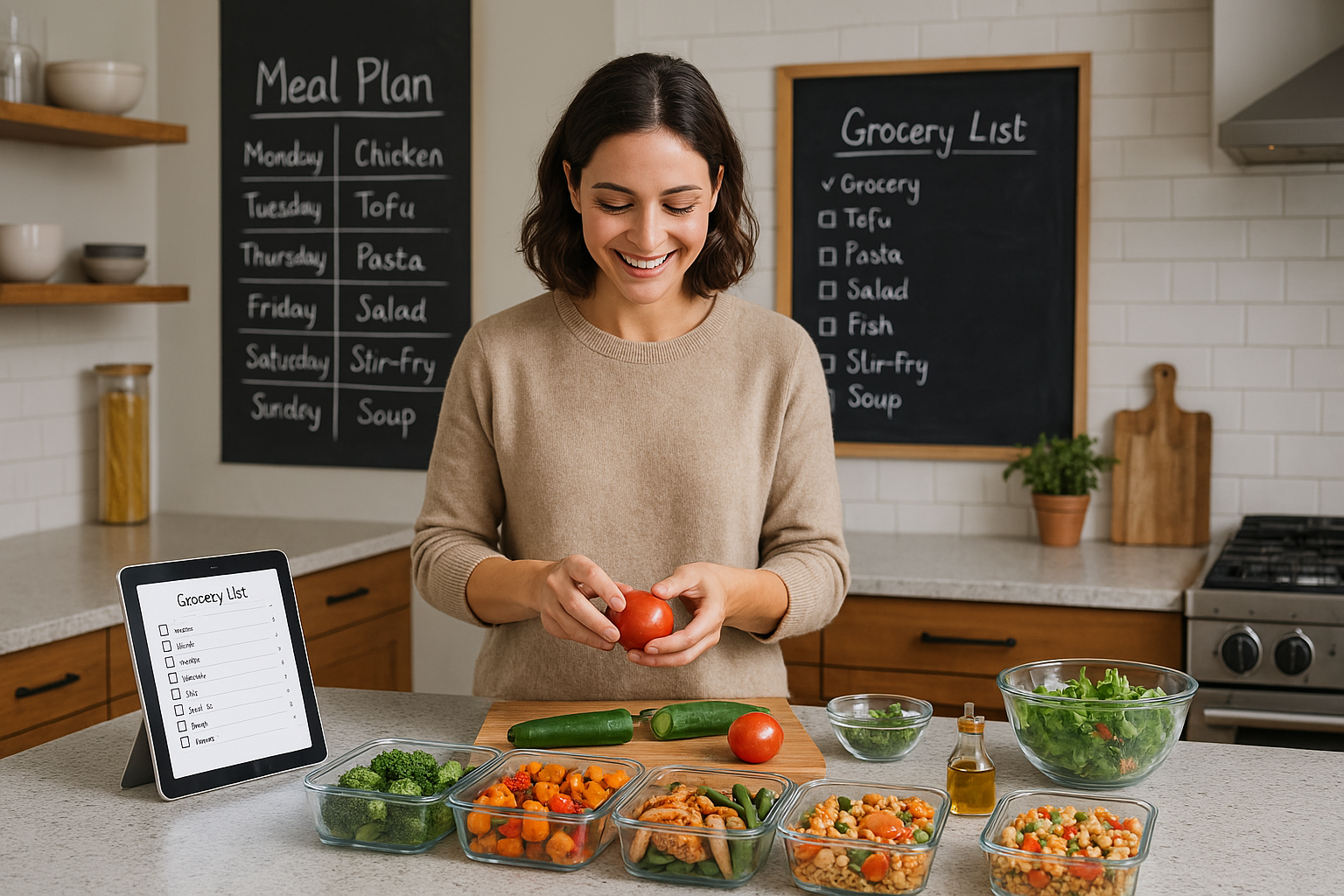Meal Planning: A 2025 Guide to Eating Smarter, Not Harder
In today’s fast-paced world, where time is scarce and health is a priority, meal planning has emerged as a game-changer. Whether you’re a busy professional, a parent juggling multiple roles, or someone simply trying to eat better, mastering the art of meal planning can save you time, money, and stress while boosting your nutrition.
This comprehensive guide will walk you through everything you need to know about simplified meal planning in 2025 from the basics to expert strategies, real-life examples, and practical hacks.
What Is Meal Planning?
Meal planning is the process of organizing your meals in advance using a streamlined, flexible approach that reduces decision fatigue and food waste. Unlike rigid diet plans, simplified meal planning focuses on ease, adaptability, and sustainability.
Why It Matters in 2025
- Rising food costs and inflation have made budgeting more important than ever.
- Health-conscious eating is on the rise, with more people seeking balanced, home-cooked meals.
- Remote work and hybrid lifestyles demand smarter time management.
- AI-powered grocery apps and smart kitchen tools have made planning easier than ever.
Benefits of Meal Planning
- Saves time on daily decision-making and cooking.
- Reduces food waste by using ingredients efficiently.
- Supports healthier eating habits with balanced meals.
- Cuts grocery bills by avoiding impulse purchases.
- Decreases stress around mealtime, especially for families.
Step-by-Step: How to Start Meal Planning
1. Set Your Meal Planning Goals
Ask yourself:
- Do I want to save time?
- Eat healthier?
- Stick to a budget?
- Reduce food waste?
2. Choose a Planning Style
- Weekly planning: Plan 5–7 meals at once.
- Batch cooking: Cook large portions and freeze.
- Theme nights: Assign themes like “Meatless Monday” or “Taco Tuesday.”
- Flexible planning: Plan 3–4 core meals and improvise the rest.
3. Build a Master Recipe List
Create a list of 15–20 go-to meals that are:
- Easy to prepare
- Family-approved
- Nutritionally balanced
4. Inventory Your Pantry and Fridge
Before shopping, check what you already have. This helps:
- Avoid duplicates
- Use up perishables
- Save money
5. Make a Smart Grocery List
Organize your list by category:
- Produce
- Proteins
- Grains
- Dairy
- Pantry staples
Use apps like Mealime, Paprika, or Plan to Eat to automate this step.
Real-World Example: The 3-2-1 Method
Case Study: Sarah, a working mom of two
Sarah uses the 3-2-1 method:
- 3 dinners she batch cooks on Sunday (e.g., chili, stir-fry, baked pasta)
- 2 quick meals for busy nights (e.g., wraps, omelets)
- 1 takeout or leftover night
This method saves her 5+ hours a week and cuts her grocery bill by 20%.
2025 Meal Planning Trends & Stats
- 42% of Americans now plan meals a few days at a time.
- 74% of consumers say it takes them under an hour to prep meals.
- 88% of adults report eating healthier at home than when dining out.
- AI-powered meal planning tools are used by 1 in 3 households in urban areas.
Expert Tips for Smarter Meal Planning
“Meal planning doesn’t have to be perfect it just has to work for your lifestyle. Start small and build consistency.” Emily Lachtrupp, MS, RD, Nutrition Editor at EatingWell
Pro Tips:
- Plan around your schedule, not just recipes.
- Double up recipes to freeze extras for busy weeks.
- Use versatile ingredients like quinoa, eggs, and canned beans.
- Prep once, eat twice: Cook proteins or grains in bulk.
Time-Saving Hacks
- Use pre-chopped veggies or frozen produce.
- Cook once, eat all week with sheet pan meals.
- Repurpose leftovers (e.g., roast chicken → tacos → soup).
- Set a recurring grocery delivery for staples.
Common Mistakes to Avoid
- Overplanning every single meal (leads to burnout)
- Ignoring your actual schedule
- Not leaving room for spontaneity or cravings
- Forgetting to check pantry inventory
Conclusion: Why Simplified Meal Planning Is Worth It
Simplified meal planning is more than a food trend it’s a lifestyle upgrade. By investing a little time upfront, you gain back hours of freedom, reduce stress, and nourish your body with intention. Whether you’re a beginner or a seasoned home cook, the key is to keep it flexible, realistic, and enjoyable.
Frequently Asked Questions (FAQ)
1. How do I start meal planning if I’ve never done it before?
Start with just 3 meals per week. Choose simple recipes and build from there.
2. Do I need to cook every day?
Not at all. Batch cooking and leftovers are your best friends.
3. What if I don’t like eating the same thing every day?
Use base ingredients (like grilled chicken or rice) and switch up sauces or sides.
4. Can meal planning help me lose weight?
Yes planning helps you control portions, avoid takeout, and make healthier choices.
5. How do I meal plan on a tight budget?
Focus on seasonal produce, pantry staples, and sales. Plan meals around what’s on hand.
6. Are there apps that can help me meal plan?
Yes! Try Mealime, Yummly, Paprika, or Prepear for recipes and grocery lists.
7. What’s the best way to store prepped meals?
Use airtight containers, label with dates, and freeze meals you won’t eat within 3 days.

1 thought on “Guide to Eating Smarter, Not Harder”